- Acronym Guide
- AAM
- ABS
- AC
- ACAS
- ADS-B
- AFAC
- AGL
- AI
- AIM
- ALS
- AM
- AMA
- ANSP
- AOI
- APPI
- AUV
- AUVSI
- ARPAS-UK
- ASTM
- ATC
- BVLOS
- CAA
- CAAC
- CAB
- CAP
- CASA
- CATT
- CBO
- CBR
- CBRN
- CDMA
- CDR
- CFI
- CFR
- CIR
- COA
- COMINT
- CORS
- COTP
- COTR
- CPTED
- CV
- C2
- DAA
- DAS
- DEM
- DFI
- DFS
- DGCA
- DHS
- DOD
- DPA
- DPEs
- DRG
- DRO
- DSM
- DSMX
- DSP
- DSSS
- DTM
- EASA
- EFT
- EO
- EOD
- EO/IR
- ELINT
- EMI
- ESC
- EVLOS
- eVTOLs
- FAA
- FCC
- FCS
- FHSS
- FICCI
- FLIR
- FOB
- FOV
- FPS
- FPV
- GBDAA
- GCP
- GCS
- GDPR
- GML
- GNSS
- GPS
- GSD
- GVC
- HDR
- HOGE
- IACRA
- ICAO
- ICS
- IMU
- INS
- IR
- ISA
- ISR
- ITU
- JARUS
- LAAMS
- LAANC
- LAATM
- LAI
- LAS
- LBA
- LIDAR
- LOS
- LSALT
- MAC
- MAVLink
- MLIT
- MMS
- MSL
- MTOM
- NDAA
- NCSL
- NFZ
- NIST
- NMEA
- NOTAM
- NPA
- NPRM
- NTIA
- OBIA
- OEM
- OFDM
- OGI
- OOP
- PAS
- PASM
- PAV
- PCV
- PdM
- PEC
- PIC
- PID
- PIPL
- PLD
- PM
- PN
- PPK
- PPS
- PSM
- PTZ
- PWM
- UAM
- UAOP
- UAS
- UASTM
- UAV
- UCAVs
- UHD
- UHF
- USV
- UTM
- RAIM
- RCC
- RCS
- RFI
- ReOC
- RePL
- RMS
- ROI
- RPAS
- RPC
- RTH
- RTN
- RTK
- SaR
- SAR
- SARP
- SBAS
- S.Bus
- SBIR
- SEDENA
- SfM
- SFOC
- SIGINT
- SLAM
- SMS
- SOP
- SORA
- STANAG
- STTR
- STK
- sUAS
- TCAS
- TCCA
- TFR
- TIN
- TLM
- TOF
- TP
- TPS
- TSA
- VHF
- VLOS
- VTOL
Drone Acronyms
What is ESC (Electronic Speed Control)?
By
Jacob StonerTable Of Contents
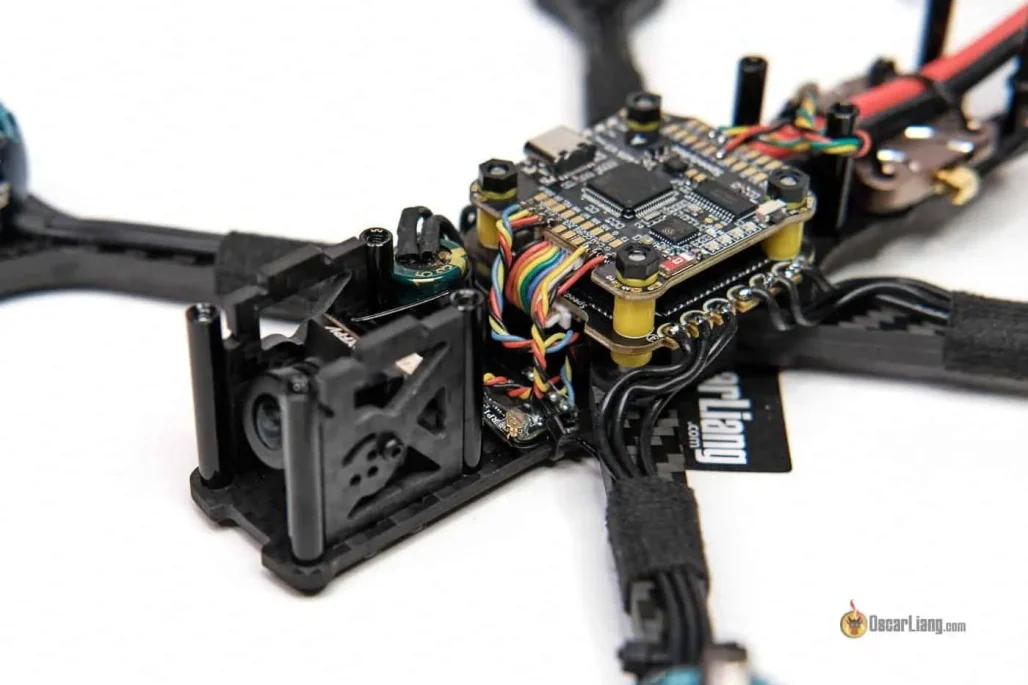
Definition
ESC (Electronic Speed Control) is an electronic device used in drones to regulate the speed and direction of the motors by controlling the power delivered to them. The ESC translates signals from the drone’s flight controller into precise motor commands, enabling stable flight, accurate maneuvering, and responsive controls. It plays a critical role in the performance of drones, particularly multirotor UAVs, where motor synchronization is essential for balanced flight.
Usage
In drones, ESCs are used to adjust the speed of each motor independently, ensuring the drone can hover, tilt, rotate, or ascend smoothly. ESCs also provide critical safety functions, such as shutting down motors in case of signal loss or low battery. High-performance drones often use advanced ESCs capable of handling rapid adjustments and delivering greater efficiency for longer flight times.
Relevance to the Industry
ESCs are a cornerstone of modern drone technology, as they enable precise motor control and stability. Whether in racing drones that require rapid speed changes, delivery drones carrying heavy payloads, or camera drones that need smooth, stable operation, ESCs are essential for achieving the desired flight characteristics.
How Does Electronic Speed Control (ESC) Work?
Signal Processing and Motor Control:
- Receiving Signals from the Flight Controller:
- PWM or Digital Signals: The ESC receives input from the drone’s flight controller, typically in the form of pulse-width modulation (PWM) signals or digital protocols like DShot. These signals convey commands for motor speed adjustments based on the pilot’s input and the drone’s flight conditions.
- Interpreting Commands: The ESC interprets the signals to determine the desired speed, direction, or braking requirements for the motor. This communication ensures that the motors operate in sync to achieve stable flight and responsive controls.
- Power Regulation to Motors:
- Variable Voltage Output: The ESC adjusts the power delivered to the motors by varying the voltage and current supplied from the drone’s battery. By regulating the flow of electricity, the ESC controls the speed of the motor in real time, enabling precise adjustments for hover, tilt, climb, or descent.
- Motor Synchronization: For multirotor drones, the ESC ensures that all motors operate at the correct speed relative to each other. This synchronization is critical for maintaining balance and achieving stable flight dynamics.
Key Functions of ESCs:
- Speed Control:
- Dynamic Adjustments: The ESC continuously adjusts motor speeds based on flight controller inputs to respond to changes in direction, wind conditions, or payload weight. This allows the drone to perform complex maneuvers and maintain stability during flight.
- Acceleration and Deceleration: ESCs enable rapid acceleration and deceleration of motors, which is essential for racing drones or drones operating in challenging environments.
- Direction Control:
- Reversing Motor Direction: Advanced ESCs can reverse the direction of brushless motors, enabling drones to perform bidirectional maneuvers. This feature is particularly useful for drones that require quick changes in direction or advanced flight capabilities, such as aerobatics or inverted flight.
- Braking Mechanism:
- Active Braking: Many ESCs feature active braking systems that rapidly decelerate the motors when needed. This improves flight control and response time, especially during sudden stops or sharp turns.
ESC Components and Technology:
- Electronic Circuitry:
- Microcontroller Unit (MCU): The core of the ESC is a microcontroller that processes input signals and executes motor control commands. The MCU ensures precise timing and voltage delivery to the motors.
- MOSFETs (Transistors): These components regulate the power flow to the motors, enabling efficient and rapid switching of current. High-quality MOSFETs improve the ESC’s efficiency and thermal performance.
- Firmware and Protocols:
- Customizable Firmware: Many ESCs allow for firmware customization, enabling operators to optimize motor performance based on specific use cases. For example, drone racers often tweak firmware settings to achieve faster acceleration and responsiveness.
- Communication Protocols: Advanced ESCs support digital communication protocols like DShot, which offer greater precision and faster response times compared to traditional PWM signals.
Integration with Drone Systems:
- Thermal Management:
- Heat Dissipation: ESCs generate heat during operation, especially in high-performance drones. To prevent overheating, ESCs often include built-in heatsinks or are mounted in locations with good airflow. Some systems also feature temperature monitoring to protect the ESC from damage.
- Overload Protection: Modern ESCs include safeguards against current overload, ensuring the motors and ESC remain operational even under heavy loads or during sudden voltage spikes.
- Power Efficiency:
- Battery Optimization: ESCs are designed to maximize power efficiency by minimizing energy loss during motor control. This efficiency contributes to longer flight times and reduced battery consumption, which is critical for drones used in applications like aerial photography or surveying.
- Regenerative Features: Some ESCs can recover energy during braking phases, redirecting it back to the battery for improved efficiency.
Applications in Drone Operations:
- Adaptability to Different Motors:
- Brushed vs. Brushless Motors: ESCs are tailored to the type of motor used. While brushed motor ESCs are simpler and less expensive, brushless motor ESCs are more efficient, durable, and suitable for high-performance drones.
- High-RPM Support: ESCs for brushless motors can handle high rotational speeds, making them ideal for racing drones or other fast-moving UAVs.
- Advanced Features for Specific Use Cases:
- Drone Racing: ESCs in racing drones prioritize speed and responsiveness, offering advanced features like bidirectional thrust and customizable acceleration curves.
- Cinematography and Surveying: For drones used in filmmaking or surveying, ESCs focus on delivering smooth, stable motor control to ensure steady footage and accurate data collection.
By interpreting signals from the flight controller, regulating motor speed, and ensuring synchronization, Electronic Speed Control (ESC) systems enable drones to achieve precise and efficient flight, making them indispensable for both recreational and professional applications.
Example in Use
“The drone’s high-performance ESCs allowed it to maintain stability in windy conditions, ensuring smooth footage for the aerial shoot.”
Frequently Asked Questions about ESC (Electronic Speed Control)
1. What is the role of ESC in a drone?
Answer: An ESC controls the speed, direction, and braking of the motors, translating signals from the flight controller into precise motor adjustments for stable and responsive flight.
2. Can ESCs affect drone performance?
Answer: Yes, ESCs significantly impact performance by:
- Enabling rapid motor adjustments for agility and stability.
- Improving power efficiency, which can extend flight time.
- Supporting advanced features like bidirectional control for dynamic maneuvers.
3. What types of ESCs are used in drones?
Answer: ESCs come in different types, including:
- Brushed ESCs: For drones with brushed motors; simpler and less expensive.
- Brushless ESCs: For drones with brushless motors; more efficient and durable, commonly used in modern UAVs.
For examples of these acronyms visit our Industries page.
As the CEO of Flyeye.io, Jacob Stoner spearheads the company's operations with his extensive expertise in the drone industry. He is a licensed commercial drone operator in Canada, where he frequently conducts drone inspections. Jacob is a highly respected figure within his local drone community, where he indulges his passion for videography during his leisure time. Above all, Jacob's keen interest lies in the potential societal impact of drone technology advancements.
Pros
Cons
You may like
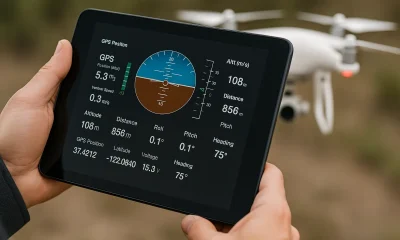

What is TLM (Telemetry) & How Does it Work?
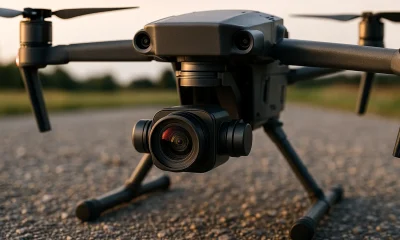

What is PTZ (Pan-Tilt-Zoom) & How Does it Work?
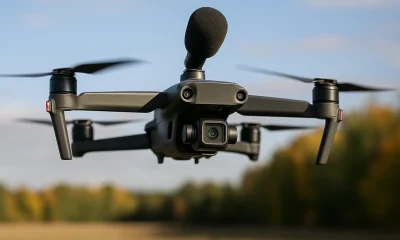

What is PAS (Passive Acoustic Sensor) & How Does it Work?


What is OGI (Optical Gas Imaging) & How Does it Work?
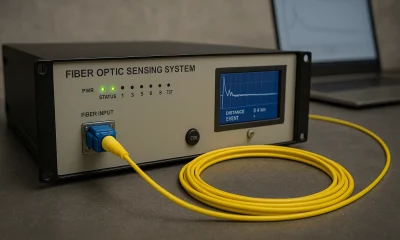

What is DAS (Distributed Acoustic Sensing)?


What is CFI (Certified Flight Instructor) & How Does it Work?